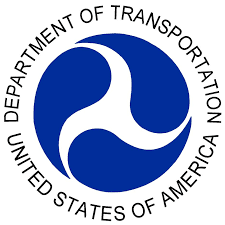Federal Highway Administration Announces More Funding and Flexibility for Key Highway Safety Program under President Biden’s Bipartisan Infrastructure Law

New guidance incorporates Safe System approach, consistent with USDOT’s National Roadway Safety Strategy
WASHINGTON – The U.S. Department of Transportation’s Federal Highway Administration (FHWA) today released new guidance to implement changes in its signature highway safety funding program, which received substantial new funding under President Biden’s Bipartisan Infrastructure Law. The guidance ensures that the new funds are used strategically to make travel safer, including protecting people outside of vehicles, such as people walking, biking, or using mobility assistive devices, thereby reducing the number of lives lost on the nation’s highways, bridges, and roads. The efforts complement the Department’s new National Roadway Safety Strategy. (Read U.S. Transportation Secretary Pete Buttigieg’s remarks on the Strategy.)
In guidance issued today, FHWA outlined several changes to its Highway Safety Improvement Program (HSIP) that can help state, local, and tribal transportation agencies save lives on the roads and bridges they own and operate. The HSIP is one of the most important federal programs for transportation agencies in their efforts to protect all road users, and the Bipartisan Infrastructure Law bolsters it with an infusion of additional funds. HSIP funding levels from 2016 to 2020 under the Fixing America’s Surface Transportation (FAST) Act totaled $11.5 billion. Under the Bipartisan Infrastructure Law, HSIP funding from 2022 to 2026 will increase significantly to $15.6 billion.
Consistent with the National Roadway Safety Strategy, FHWA recommends that HSIP funds be used to incorporate a more data-driven, holistic and equitable Safe System Approach to roadway safety that builds in redundancies so if one element of a transportation system fails, other elements provide protection to save lives and prevent serious injuries on our roads.
The HSIP places a focus on infrastructure safety improvements, and under the Bipartisan Infrastructure Law, states now have more flexibility to use up to 10 percent of their HSIP funds for “specified safety projects” that include non-infrastructure safety projects such as public awareness campaigns, research, automated traffic enforcement systems, emergency services, and efforts to protect children such as Safe Routes to School activities.
The FHWA guidance issued today also implements the provisions of the Bipartisan Infrastructure Law that will help vulnerable road users who are considered to be most at risk for being involved in traffic crashes that result in fatalities. These road users include people who walk, bike, and use personal conveyances. To protect them, the new law adds a Vulnerable Road User Safety Special Rule to the HSIP. Under the rule, if vulnerable road users make up 15 percent or more of the total number of fatalities in a state in a given year, the state is required to dedicate at least 15 percent of its HSIP funds the following fiscal year to projects that address the safety of these road users. Additionally, the new guidance incorporates legislative changes to permit 100% Federal funding for certain pedestrian and bicyclist projects.
FHWA’s updated HSIP Eligibility Guidance can be viewed at https://safety.fhwa.dot.gov/hsip/rulemaking/docs/BIL_HSIP_Eligibility_Guidance.pdf. For information on FHWA’s guidance on the High Risk Rural Roads Special Rule, Older Drivers and Pedestrians Special Rule, and the new Vulnerable Road Users Special Rule, go to https://safety.fhwa.dot.gov/hsip/rulemaking/docs/Section148_SpecialRule_Guidance.pdf.


